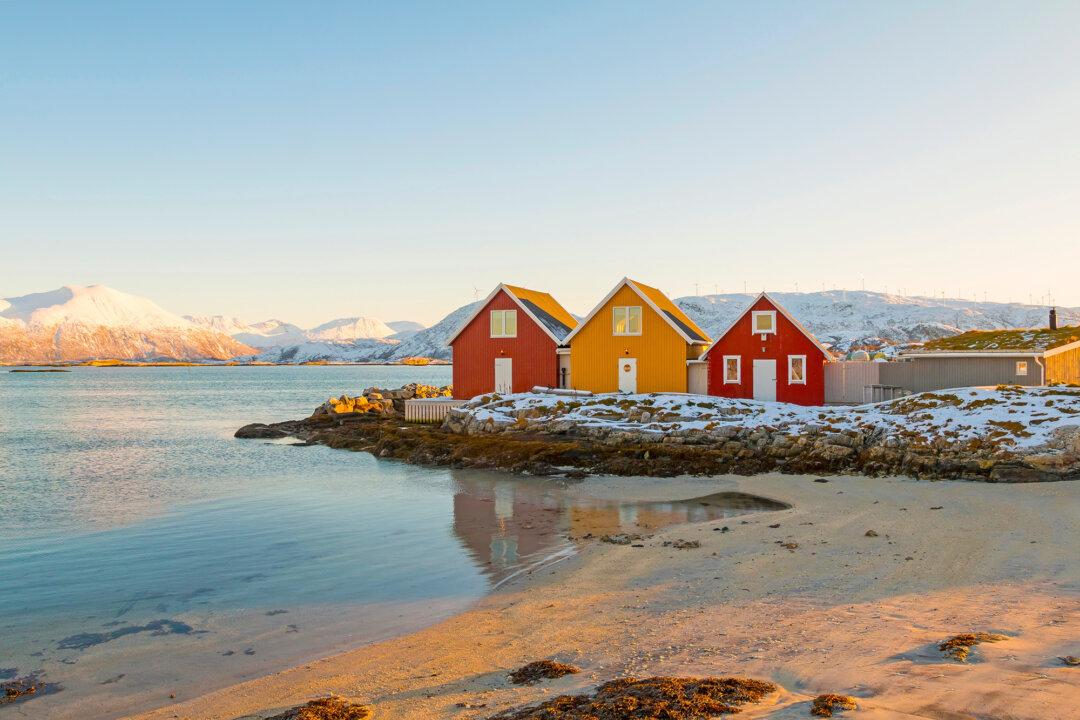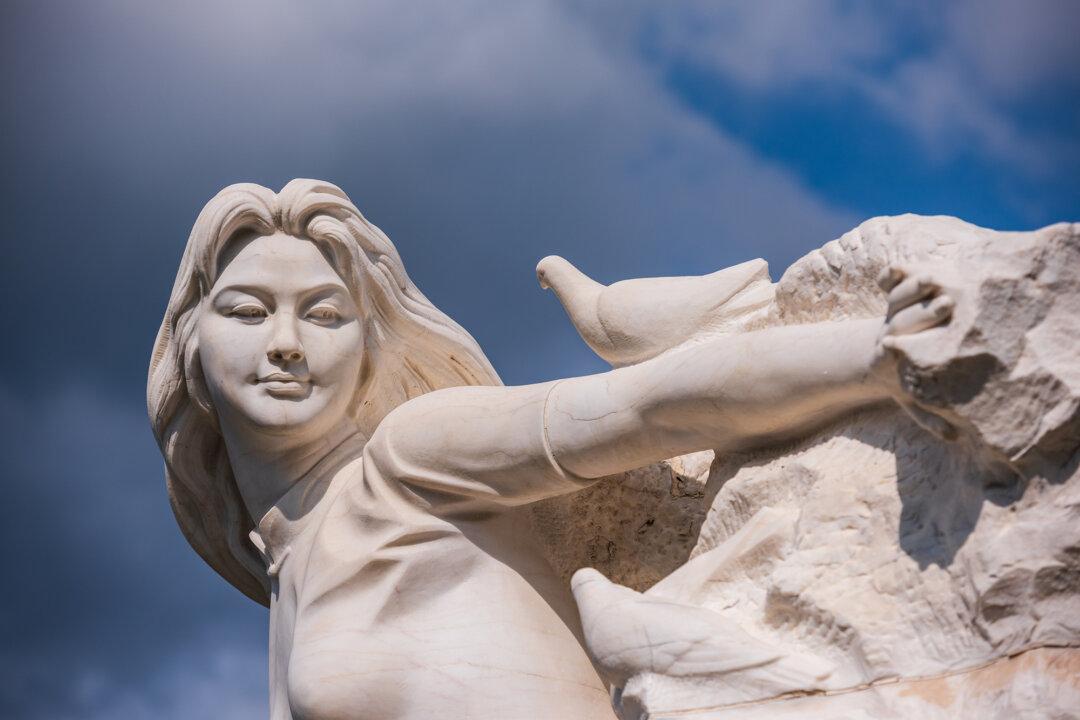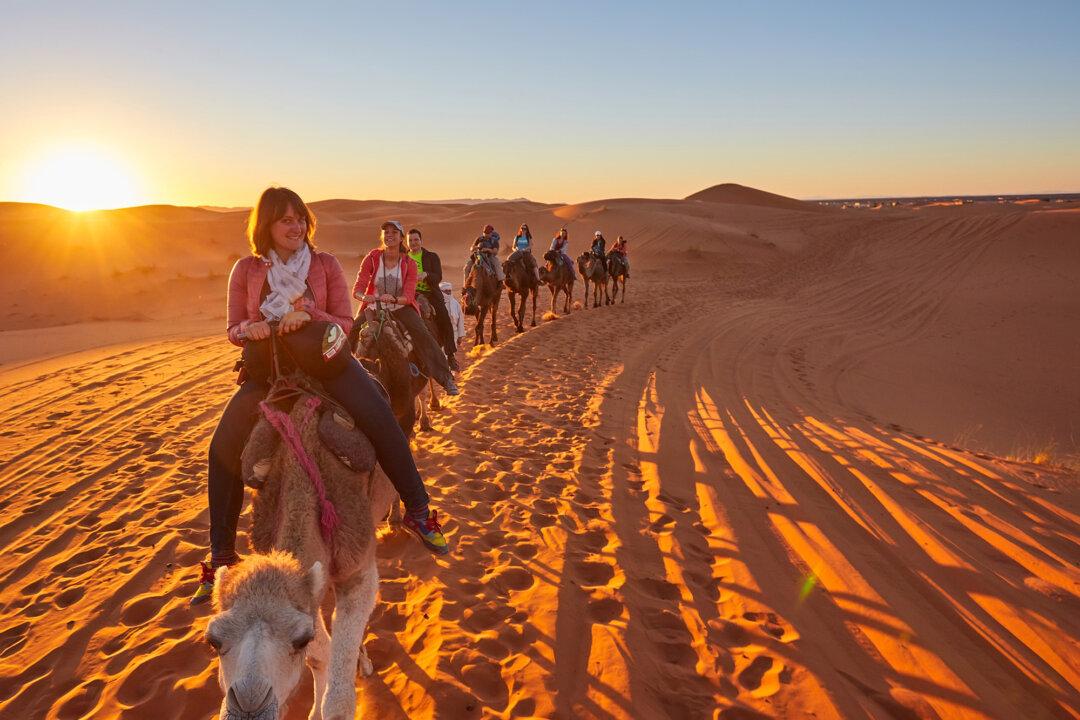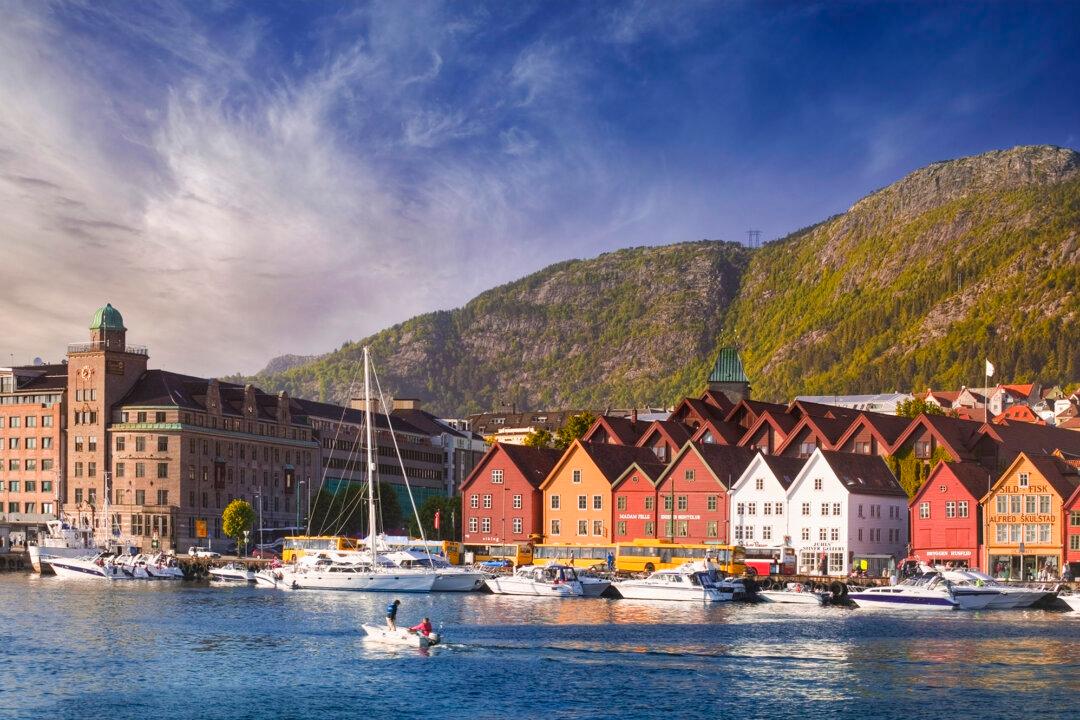It’s beautiful—and maybe a little bizarre. Everything in the heart of this national capital is grand. A statue of Alexander the Great dominates the main square, the global conqueror astride a bucking horse, his sword drawn, fountains gushing all around. Entering the square, I pass through a soaring gate, itself reminiscent of the Arc de Triomphe in Paris.
Nearby, pedestrians stroll across the Art Bridge, over the Vardar River, a span lined with 28 tributes to national heroes, poets, playwrights, authors, and composers.





